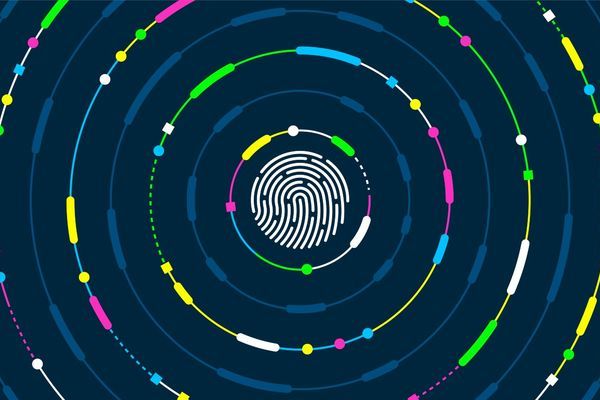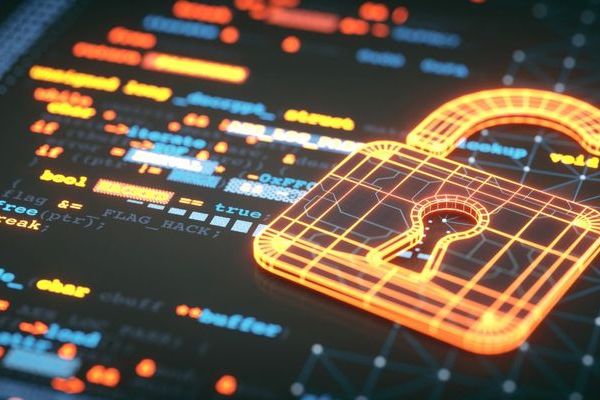Security starts with identity
In today’s digital world, where cyber threats are constantly evolving, it is crucial to harness the power of innovation to protect organisations and economies. In this blog post, we explore some of the more significant innovations in cybersecurity, from Artificial Intelligence to Distributed Ledger Technology and speak with our leading Identity and Solutions Architects to get their take on how to set your business up for security success.
What is Cyber Security Innovation?
When thinking about Cyber security innovation, we consider the development and implementation of new technologies, strategies, and approaches to addressing and mitigating cyber threats. It involves us staying one step ahead of cybercriminals by leveraging cutting-edge solutions and continuously adapting to emerging threats. You might be familiar with firewalls, intrusion detection systems, antivirus software, encryption methods and authentication mechanisms. However, there is more out there that organisations can consider.
Artificial Intelligence (AI) and Machine Learning (ML)
AI and ML are increasingly being integrated into cybersecurity solutions. These technologies can analyse large datasets to detect patterns and anomalies, helping to identify potential threats and vulnerabilities with speed and accuracy. This innovative approach has been growing amongst the industry with Microsoft’s release of Entra ID, leveraging machine learning and conditional access policies to detect potential threats through automated signals.
Zero Trust Security
This has gained popularity in the cybersecurity industry and has guiding principles that ensure trust is continually evaluated. It assumes that no one, whether inside or outside of a network, should be trusted by default. Instead, users and devices are continuously authenticated and access to resources is based on their specific permissions and the context of their request. According to Microsoft, this has reduced data breach risks by 50% whilst increasing security team efficiency.
Cloud Security
Not so recently, the world has seen a great shift towards the cloud, and organisations are migrating more of their data and services away from on-premise. This shift has birthed cloud-specific tools and practices that allow businesses to protect themselves through centralised controls, the ability to scale cybersecurity resources, data encryption and robust IAM solutions managing user access and permissions.
Distributed Ledger Technology
Operating on a decentralised network, Distributed Ledger Technology (DLT) records and verifies transactions across multiple nodes or computers and can make data resistant to single points of failure and extremely difficult to alter or delete. Its enhanced security makes it useful for identity verification, data integrity, and secure communications.
Whilst these are only some examples, it highlights that the process is dynamic and new strategies will always be available to leverage. Organisations should consider collaborating with security professionals, industry experts and governments in order to create a more secure digital ecosystem.
Security starts with Identity
The common theme amongst all cybersecurity is the importance of securing identity across your data, network, and systems. Ensuring your organisation has established strong controls over who can access what digital resources is fundamental to protection. IAM is a foundational component of any robust cybersecurity strategy, and it plays a critical role in ensuring that only authorised individuals and devices are granted access to sensitive information and systems.
The standards are standards for a reason. The more you can stick to them, the easier your system will be to implement, maintain, and expand.
It can be tempting to think that a standard almost works for you but that you can improve on it, modify it, or do something slightly custom. That invariably leaves you in a position where you’re struggling to integrate this custom solution across your ecosystem, where you’re reimplementing custom versions of what would be standard libraries, and you’re doing it in a way that’s invariably less secure. The standards have the benefit of years, even decades, of use and refinement; make the most of that.
Think about where to capture and store your data – which systems should be the source of the truth.
This is particularly important when it comes to users’ Personally Identifiable Information (PII). Do you have a plan for storing and handling user data in a way that’s compliant with the regulations that apply to those users? Consider limiting the data captured or stored by certain systems to just the information necessary for those systems. For example, maybe you capture and store information in your authentication system that’s just relevant to authenticating the user, perhaps just username/email and password, all other PII is either captured by or written to your CRM. Have a plan for how data will move around your systems and how you can make the right data available at the right time without duplication.
Think about offering Reusable identity to your users
Allow users to use their one identity instead of requiring them to sign up multiple times. To do this, there are centralised options like identity federations with government-issued identity providers but also corporate or social Identity providers. But the more exciting option is now decentralised, such as verifiable credentials. Both of these have valid use cases and their strengths, but the decentralised option has the most potential for re-use across systems, domains and even jurisdictions.
Employ a user-centric design
Understand the different user types requiring access to your systems and provide them with controlled access to the requisite data:
- end users to self-manage personal details
- partners to manage their own representatives
- service provider support staff to manage end-user details and to have access to audit/telemetry logs
Users may be put off by complex registration processes, so design the registration process to be as simple as possible, allowing additional data to be captured in subsequent visits as it is required to maximise service uptake.
Similarly, make the authentication process appropriate to the sensitivity of the service being accessed, applying more stringent access controls, such as multi-factor authentication, when users request more sensitive or valuable operations.
Proceeding in the absence of cybersecurity innovation and strategy can result in consequences far beyond financial loss. Public sector organisations, businesses, and individuals alike face the risk of disruption to critical infrastructure, damage to reputation, penalties, and even implications on national security. Therefore, embracing cybersecurity innovation is not just a choice but a responsibility to protect our digital future.
Cyber Resilience updates
Sign-up to get the latest updates and opportunities from our Cyber Resilience programme.















